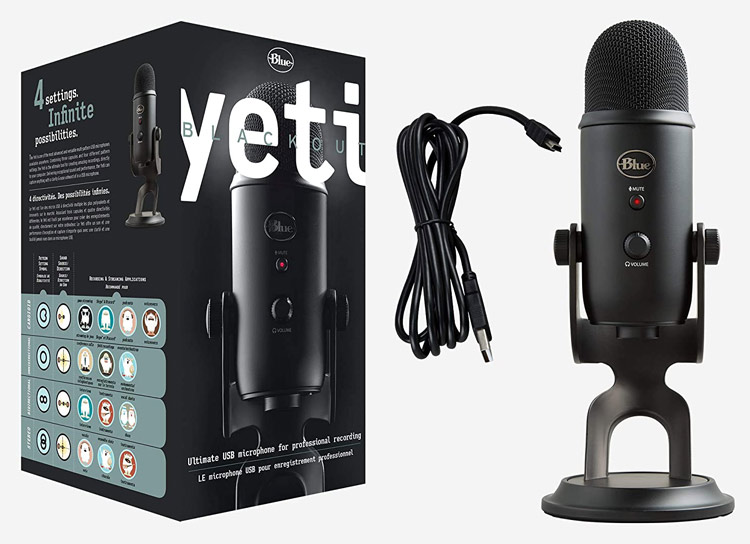If you’re curious why Blue Microphones will call their microphone after a fictional abominable snowman, then you should see the Yeti in person. This is a huge thing — literally. It measures a foot long, weighs 3.5 pounds, and makes most microphones look ridiculously tiny.
But beyond its imposing size, the Yeti name is just as accurate a way of defining its sound. Here’s a brief look at the USB Blue Yeti mic.

Blue Yeti Features
Polar Patterns
One of the distinctive characteristics of the Yeti is the ability to change polar patterns.
Blue uses a patented three-capsule microphone array that allows you to switch between four different polar patterns, customizing how the Yeti picks up the sound.
They are Cardioid, Omnidirectional, Bidirectional, and Stereo:
Cardioid
Cardioid mode is the one that people are likely to use. It’s great for podcasting, gaming, streaming, webinars, or calling – plus it centers the pickup pattern on the front.
Omnidirectional
The omnidirectional mode takes sound from both directions fairly. It’s going to sound more distant, but it’s perfect for conference calls or other circumstances where sound quality isn’t important, but you need to record several people.
Bidirectional
Bidirectional is perfect for interviews, but it won’t be the safest choice to use a single microphone.
Stereo
The stereo mode can be a good choice if you need clear separation of left and right channels – and will also work well for recording instruments, although cardioid is usually a better choice.
Other Features
Size & Weight

It is necessary to remember that the Yeti is a heavy microphone. And because of that, it’s not going to work with any stand.
Plug-N-Play With USB
You’re not going to need any software or drivers to use Blue Yeti. Just connect the provided cable to the USB port, select it in your audio settings, and start recording.
Blue has recently come out with apps that let you update and change your settings but it’s optional.
Headphone Jack and Volume Control
No matter which USB mic you end up using, make sure it has a headphone jack. This helps you to track your recording or streaming without delay.
A nice touch with the Blue Yeti is that it has a volume switch on the front of the headset.
Mute Button

The mute button is another good feature that has not been seen on many other USB microphones. It even has a red LED that goes from solid when it’s not muted to blinking when it’s muted so you know which place it’s in at a glance.
Stand
The stand that comes with the Blue Yeti is nice and solid. It allows you to rotate the position of the mic, but since you should really be speaking from only a few inches away, I would skip the stand and get a boom arm or mic stand right away.
Blue Sherpa Software
Blue Sherpa is a free desktop software that lets you upgrade all of your USB microphones, control parameters such as gain and pickup patterns.
How Much Does the Blue Yeti USB Mic Cost?
The Blue Yeti microphone is available for $129.99 (approximately $100/AU$180), which is very affordable for a high-quality mic, given that you can pay upwards of $1000 on very high-end ones.
You can also purchase the Nano version for $99.99 (£89.99/AU$159) if you’re trying to save money. However, keep in mind that the smaller version doesn’t allow stereo or bi-directional modes (so you won’t be able to sit across the table from a guest on your podcast).

